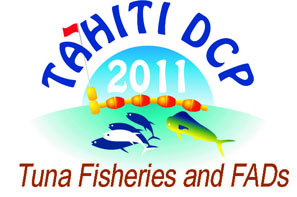Catch composition in small-scale tuna fisheries associated to data buoy moored in the Western equatorial Atlantic
1 : Animal Sciences Department, Universidade Federal Rural do Semi Árido
(UFERSA)
Av. Fco. Mota, 572. Bairro Presidente Costa e Silva, Mossoró-RN. CEP: 59.625-900. -
Brésil
2 : Marine Sciences Institute - Universidade Federal do Ceará
(LABOMAR - UFC)
* : Corresponding author
Av. da Abolição, 3207, Bairro Meireles, Fortaleza-CE. CEP 60165-081. -
Brésil
Due to the collapse of the lobster fishery, the fleet based in Areia Branca county, Northeast Brazil, is developing a fishing technology associated with a data buoy of Program PIRATA (Pilot Moored Array in the Tropical Atlantic) which was anchored in the Equatorial Western Atlantic and has acted as a fish aggregating device (FAD). Thus, the present study aims to characterize the production of this emerging fishery by identifying the species caught and their relative participation in the landings by weight. Data were obtained between May 2010 and May 2011 in the landings on fishing piers and on board through two cruises made in February 2011 and April 2011. The fleet is composed of wooden motorboat with 13 meters length and power engines of about 110 HP. A total of 31 landings from 6 boats were analyzed, totaling 114.774 kg of fish. The main target species in this fishery are the yellowfin tuna (Thunnus albacares) and bigeye tuna (Thunnus obesus) (92.68%) which are marketed according to individual weight. Due to their relative commercial price are also caught species such as marlin (Makaira nigricans) (2.73%), skipjack (Katswuonus pelamis) (1.72%), dolphinfish (Coryphaena hippurus) (1.69%), wahoo (Acanthocybium solandri) (0,90%), rainbow-runner (Elegatis bipinulata) (0.12%), sharks (Prionace glauca) and (Carcharinus longimanus) (0.08%) and in the category other we have occasionally swordfish (Xiphias gladius) and triggerfish (Balistes sp.) (0.08%). It's possible conclude that this fishery play an important role as alternative to the fishing sector in the Northeast Brazil. This is especially due to the high market prices of species caught. However, more studies are necessary for the better understanding of this type of fishery as well as the development of FAD program in Brazilian waters to reduce the fishing activity in the PIRATA buoys.

 PDF version
PDF version
